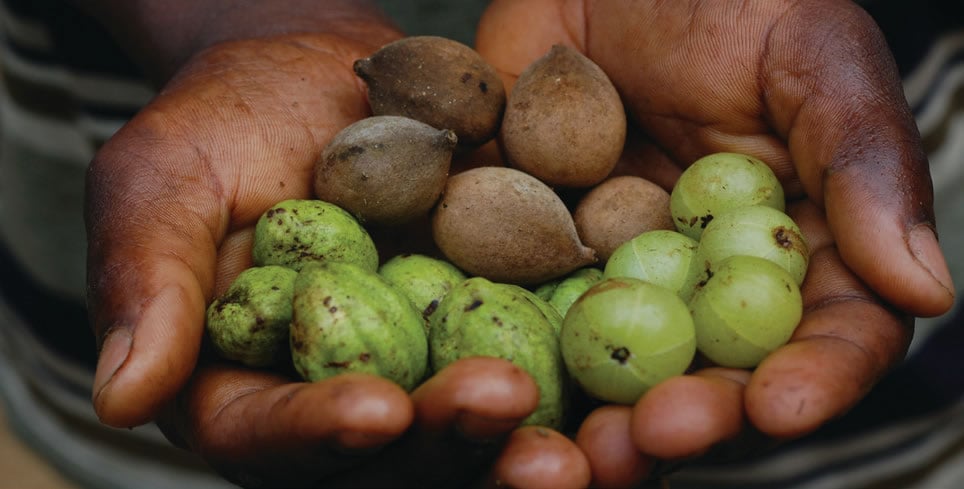Triphala

Triphala is Ayurveda's most widely used formula. It is a combination of three fruits: amla (phyllanthus emblica), haritaki (terminalia chebula) and bibhitaki (terminalia bellirica), thus the name triphala, which is derived from the words 'tri', meaning three, and 'phal', meaning fruit. It balances all three constitutional body-types and is therefore suitable for everyone.
Triphala is a renowned digestive system tonic. It optimises a healthy digestion and encourages daily regularity reducing IBS (irritable bowel) symptoms and bloating as well as balancing the diarrhoeaconstipation cycle. It supports the body's natural cleansing ability, strengthens the digestive mucosal membranes and also encourages cellular rejuvenation throughout the body. Triphala can tone and astringe the mucous membranes lining the digestive tract which encourages an effective peristaltic motion, drawing out any congestion and undigested toxins from the body. It is also a specific for leakygut and addressing symptoms of candida connected with any chronic immune disorder. Antioxidants found in the three fruits make triphala an excellent source of antioxidant protection for the digestive tract.
Although all three are traditionally collected from the wild, the enormous demand for amla (also known as Indian gooseberry) has led to many people growing it in specialist amla orchards. With a few rare exceptions, haritaki and bibhitaki are sustainably collected from the wild.
In the Western Ghats, bibhitaki is one of the largest and most spectacular trees in the forest. Its vast canopy not only produces bibhitaki fruits, it also provides a habitat for countless other species, including the Great Pied Hornbill. Unfortunately, many giant bibhitaki trees are under threat as the timber offers a tempting source of income for landowners.
The Great Pied Hornbill plays a vital role in the ecosystem of the Western Ghats by dispersing seeds from its droppings throughout the forest. It also has a very peculiar nesting habit; every year the female seals herself into a large tree hollow with a wall of mud to provide a safe home to raise her young chicks. Her devoted partner then spends up to four months flying back and forth to feed her fruit through a crack in the wall.
Bibhitaki is one of the only tree species in the Western Ghats with hollows large enough for the hornbill to nest. Protecting the bibhitaki tree therefore also contributes to the protection of these special birds and their vital role in conserving the forests.
A Little Bit Of Chemistry
Amalaki is a natural source of bioflavonoids and Vitamin C (one of the highest in the vegetable kingdom, at a level 20 times higher than that of an orange). It is also packed with antioxidants, providing protection from free radicals, but also supporting the functioning of the immune system. Bibhitaki contains astringing tannins that influence the toning and strengthening effect of this herb on mucous membranes.
Haritaki contains anthraquinone laxative compounds which encourage a natural laxative action within the body. It is also another source of astringing tannins which make it beneficial for prolapses, ulcerations and conditions such as leaky-gut.

